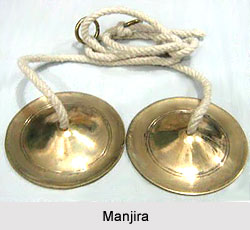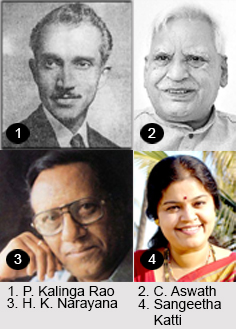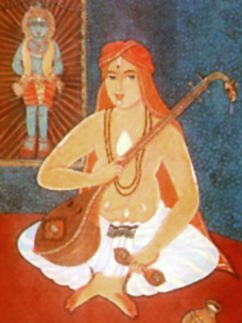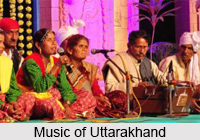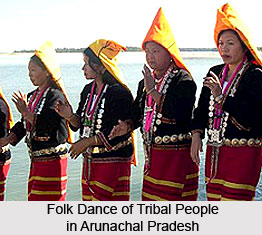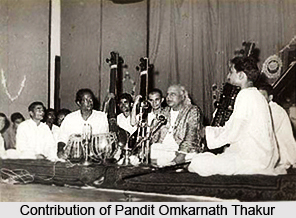 Contribution of Pandit Omkarnath Thakur has been great and far reaching. Omkarnath had been trained only by Vishnu Digambar Paluskar, a thoroughbred maestro, and pioneering educator, of the Gwalior gharana.
Contribution of Pandit Omkarnath Thakur has been great and far reaching. Omkarnath had been trained only by Vishnu Digambar Paluskar, a thoroughbred maestro, and pioneering educator, of the Gwalior gharana.
With his formidable intellect and erudition, Pandit Omkarnath Thakur obviously did not have the makings of a conformist. To an extent, he was influenced by the doleful and sweet style of another Gwalior-trained maverick, Auliya Rehmat Khan (1860-1922); but his own deviations from Gwalior were more radical. Critical opinion therefore regards Pandit Omkarnath Thakur as an original musician, though with firm moorings in Gwalior vocalism.
Contribution to the field of Bhajans
Like the later romanticists, Pandit Omkarnath Thakur`s repertoire consisted only of Khayal and Bhajans. He never sang Tarana-s, Tappa-s or Thumri-s in public, although all these were part of the Gwalior repertoire in his times. His Khayal repertoire had a substantial representation of common ragas like Malkauns, Desi, Shuddha Kalyan, and Komal Rishabh Asavari, and a moderate presence of uncommon raga-s like Devgiri Bilawal, Sughrai, and Shuddha Nat. He adapted a few Carnatic raga-s so comfortably, that they virtually lost all traces of their Carnatic origins. He selected them for their emotional content, and rendered them in his own unique style.
There are clearly three facets to Omkarnath`s personality as a musician. The first is his pre-occupation with mystical aspect of musical pursuits, inherited from his father, who renounced the world to unravel the mysteries of the primal sound, "Om". The second is the scholarly facet, steeped in ancient musicological texts, whose wisdom he attempted to translate into performance. The third is the dramatic, even theatrical, facet which explicitly sought to create an impact amongst his audiences. How comfortably these facets cohabited in the same person is a matter of opinion. The combination, however, made him a colourful, and even, controversial musician.
The Pandit Omkarnath Thakur had cultivated a monumental voice in terms of volume, range, and pliability. His faultless technique enabled him to cover two and a half octaves without any sacrifice of musical value. He made very effective use of volume and timbre modulations in order to heighten the emotional intensity of his renditions. He had strong views on the emotional personality of each raga. In pursuance of these perceptions, Pandit Omkarnath Thakur composed a large number of bandish-es in various raga-s under the pen-name "Pranav Rang", published them in his six-volume work, Sangeetanjali, and performed them regularly at concerts.
Pandit Omkarnath Thakur tailored all aspects of his rendition of each raga based on his perception of it, drawn mostly from ancient and mediaeval musicological texts. This approach could sometimes lead to unorthodox architecture or apparently libertarian interpretations of raga-s as currently understood. But, most of the time, it was compelling music.
His explorations in the melodic and emotional personalities of raga-s were informed by his experiments with their non-musical applications. For instance, in Sangeetanjali (Vol. IV), Pandit Omkarnath Thakur narrates how he was able to cure a child of insomnia by singing to him the vilambit alap of a variant of raga Puriya in the lower octave around sunset continuously for a week. Though Pandit Omkarnath Thakur did not claim scientific validity for such successes, he was unjustly derided for having made such claims. While the scientific value of these experiments may be questioned, there is no doubt that Pandit Omkarnath Thakur enriched his own insight into mysteries of the raga-s through them.
Pandit Omkarnath Thakur had a rare ability to deploy the poetry of his khayals in a variety of ways and for achieving a variety of effects. While rendering the bandish, Pandit Omkarnath Thakur treated the poetic element with great respect as literature. In rhythmic play, however, Pandit Omkarnath Thakur could mutilate the words, treating them, effectively, as clusters of meaningless consonants. And, as evocative expressions, he could use them virtually in conversational deployment. The various ways in which Pandit Omkarnath Thakur enunciated selected phrases, along with melodic variants, almost approached the lyrical sophistication of the Thumri genre.
Not surprisingly for his stature, Pandit Omkarnath Thakur`s khayal architecture was impeccable, except in a few raga-s, like Nilambari, in which the emotional content of the raga was suited only for slow-tempo compositions and improvisations. His virtuosity was formidable. His tan-s was epitomes of effortless agility and complexity, comparable to the best in his era. Occasionally, there was an element of exhibitionism in them. But, even conservative audiences accepted this as a part of the total package that was Omkarnath Thakur.
The recording companies gave him the importance he deserved. But, most of his published recordings came out before the advent of the LP format. A sizable number of his surviving concert recordings have been published posthumously on audio-cassette and CD. It is reliably learned that his entire legacy of recordings -- other than what remains unpublished from the All India Radio Archives -- is, by now, in the public domain.
Contribution to Social Scenario
While earning laurels as a musician, Pandit Omkarnath Thakur also involved himself actively in the freedom struggle. He was elected President of the Bharuch Congress Committee, and a member of the Gujarat Provincial Congress Committee. When India made its tryst with destiny at the stroke of midnight on August 14-15, 1947,
Jawaharlal Nehru invited Pandit Omkarnath Thakur to sing the national song, "Vande Mataram" at the Central Hall of Parliament House, from where it was broadcast nationally. In later years, his composition of Vande Mataram became, by public demand, almost a permanent feature of his public concerts.
When Pandit Madan Mohan Malaviya was establishing the Banaras Hindu University (BHU), he invited Pandit Omkarnath Thakur to set up and manage the Department of Music. This could not happen during Malaviya`s lifetime; but it did happen in 1950, and Pandit Omkarnath Thakur moved to Varanasi as the first Dean of the Music Faculty to serve there until retirement. At BHU, he trained a group of outstanding musicians and scholars to build a centre of excellence. Amongst his most distinguished students were Dr. Premlata Sharma, whom Pandit Omkarnath Thakur groomed as an eminent musicologist, and Dr. N Rajam, whom he nurtured into an outstanding violinist.
